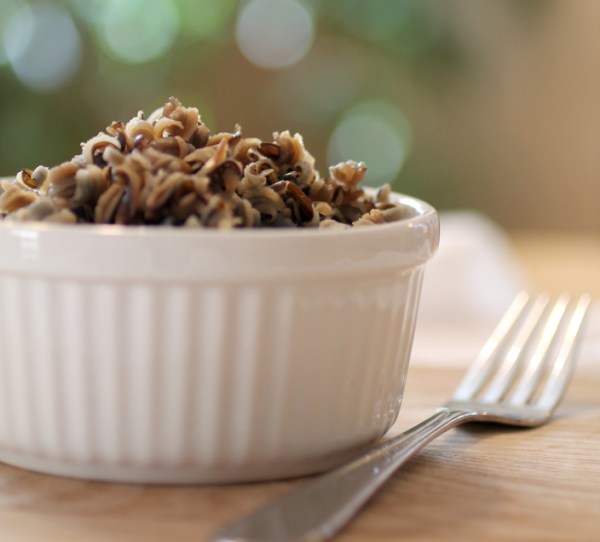
Wild rice is a Midwestern delight and a staple for people and wildlife alike, but what do you really know about wild rice? Did you know that wild rice is Minnesota’s official state grain? Or that September is National Wild Rice Month? Take a look at some more “wild” rice facts below:
- The name wild rice is a misnomer because the grain isn’t exactly rice. It’s a grass seed with close relatives being other cereals, such as corn, wheat, barley, and even bamboo.
- You can pop wild rice like popcorn! Heat it in oil and shake until it pops for a crunchy and healthy snack.
- Many people consider it to be an important staple food. For centuries, wild rice was particularly important for the Ojibwa, Menominee, and Cree tribes of the Midwest. Wild rice was seen as a sacred component of Native American culture, with many Native American tribes considering it to be a “gift from the creator.”
- Wild rice is very healthy. It’s high in protein, high in carbohydrate content, low in fat, and is an excellent source of fiber, magnesium, zinc, and niacin, not to mention it is high in antioxidants. It’s nutritious, filling, and typically healthier than wheat, oats, and corn.
- It’s a heartland staple. Wild rice is native to North America and thrives in the Midwest and Great Lakes region. There are also different wild rice varieties that grow exclusively in the American South and similar climate environments in Asia where it’s prized for its greens.
- Wild rice is found in the shallow waters of lakes, streams, and marshes. The typical depth for wild rice is between six inches and three feet.
- Over the centuries, wild rice has had over 60 popular synonyms, including Indian rice, Canadian rice, and water oats.
- Rice was traditionally harvested by Native Americans in canoes. People used to harvest the grass seed by using large sticks to dislodge and knock down ripe seeds into their canoes. Native Americans would dry wild grass in large pots over open fires and then save them in birch-bark baskets. Today, uncultivated Minnesota wild rice, also known as “wild” wild rice, must be gathered by licensed wild rice harvesters in this traditional way.
- Minnesota produces a majority of the wild rice that you see in markets and grocery stores. In fact, the state produces 5 to 10 million pounds of wild rice annually.
- Wild rice is an important source of sustenance for wildlife. Waterfowl – including mallard ducks, blackbirds, bobolink, wood ducks, and black ducks – seek it out for its high protein content.
- This grass seed is versatile. With its texture and rich nuttiness, it’s a perfect addition to make any meal a little heartier. Wild rice shines in salads, side dishes, entrees, and even desserts. Check out our collection of wild rice recipes.
- Wild rice essentially keeps forever. When stored properly in a dry and airtight container, uncooked wild rice is a perfect pantry staple.
With a long and storied history in the Midwest, wild rice is an excellent staple for any pantry and a wonderful addition to every diet. Learn more about the history, products, and heritage behind Canoe Wild Rice.
